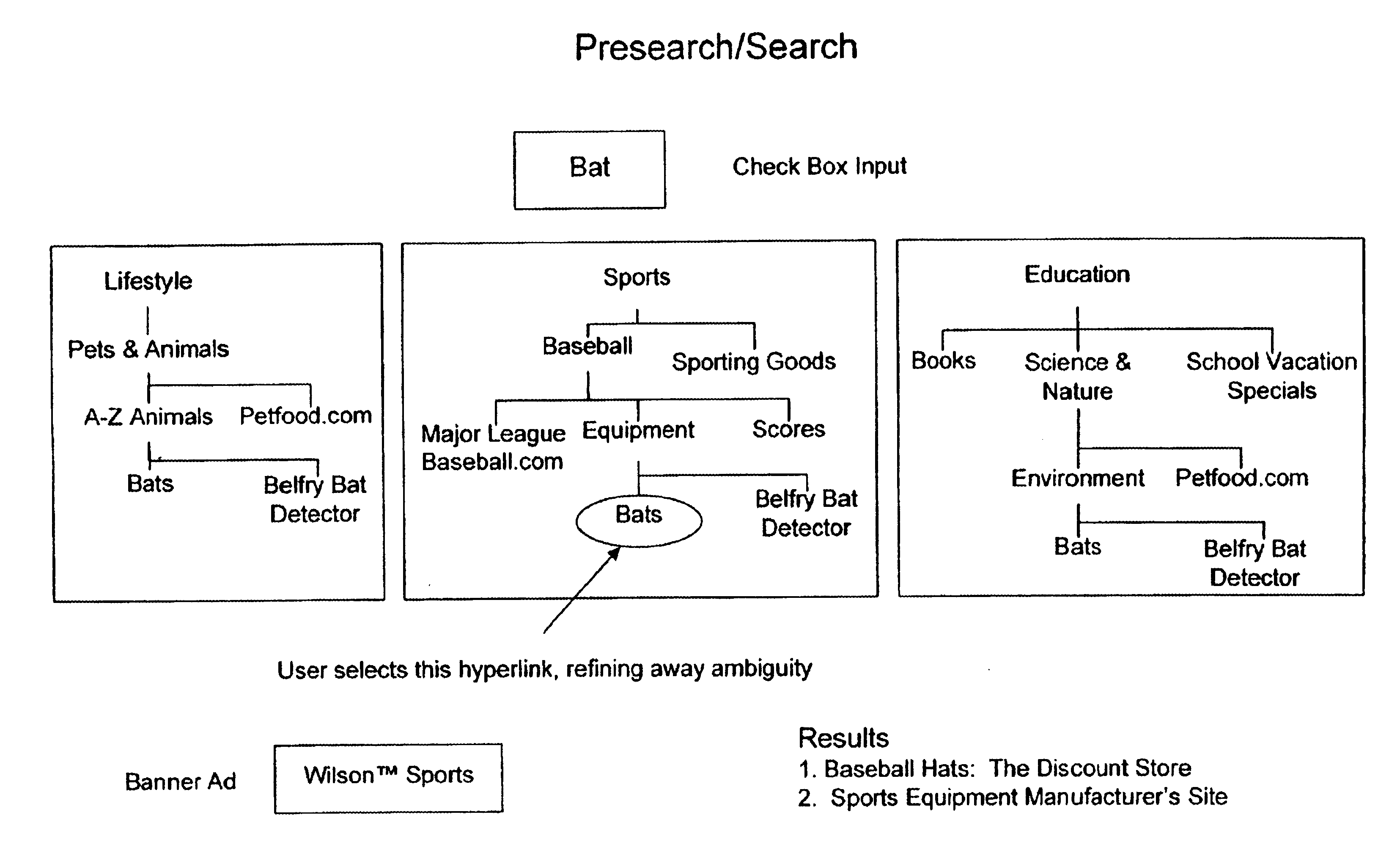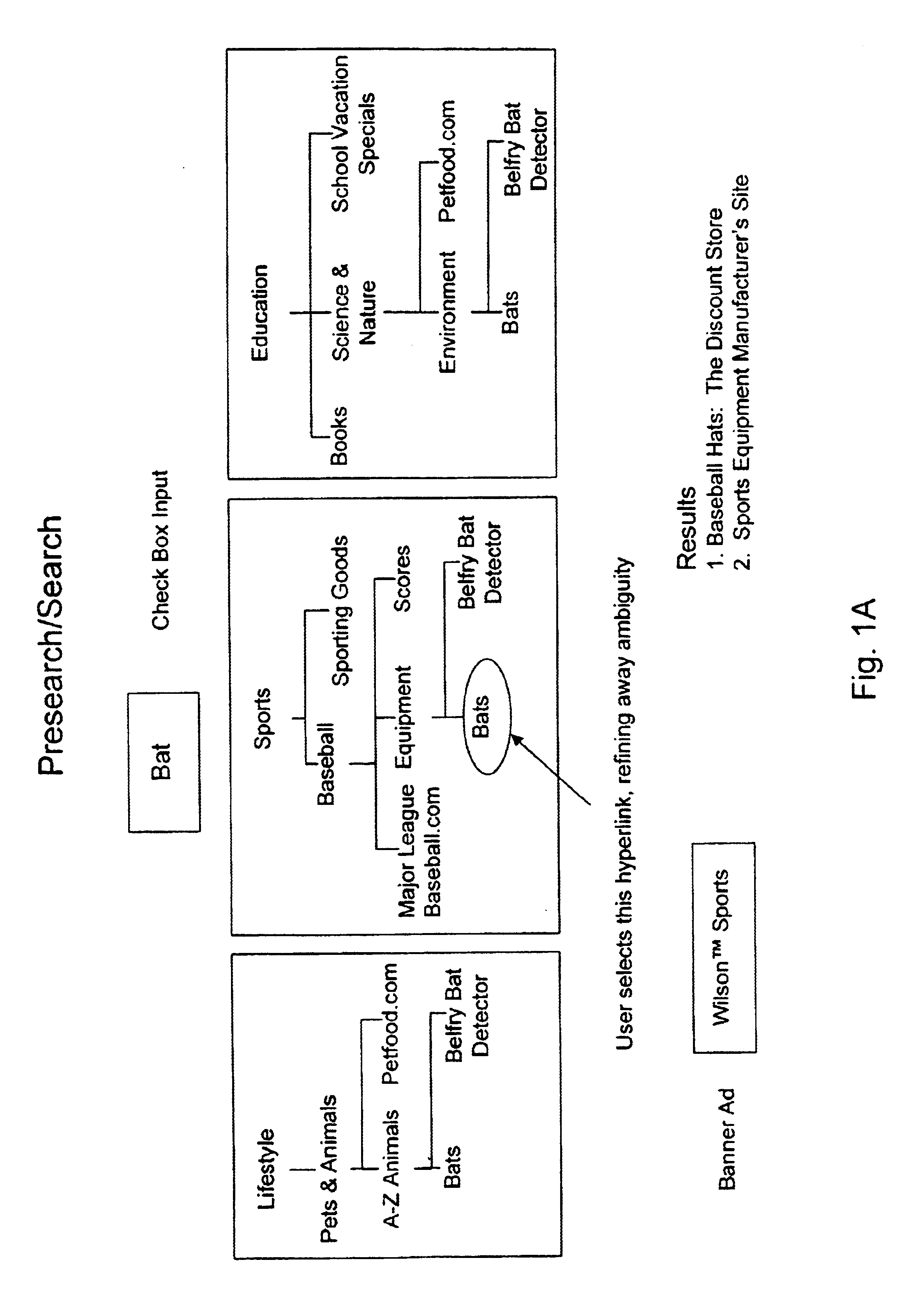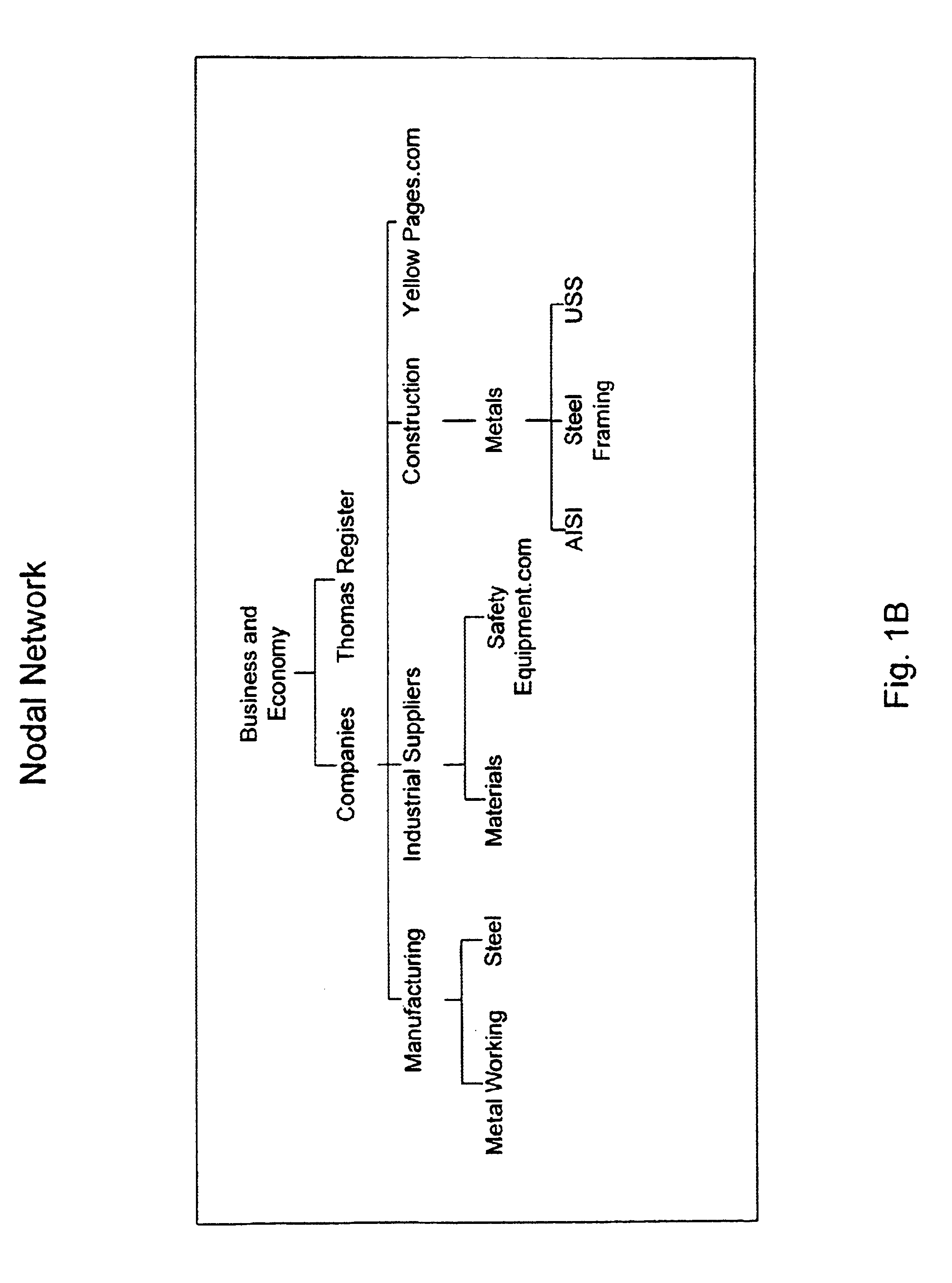However, this popularity, in conjunction with the non-standardized methods of presenting data and fantastic growth rate, have made locating desired information and navigation through the vast space difficult.
However, this type of structure often requires some familiarity with the classification
system, to avoid
elimination of relevant resources by improperly limiting the search to a particular classification or group of classifications.
However, the retrieval process is often time-consuming and cumbersome.
A well-recognized problem with existing search engines is the tendency to return hits for a query that are so incredibly numerous, sometimes in the hundreds, thousands, or even millions, that it is impractical for user to wade through them and find relevant results.
Many users, probably the majority, would say that the existing technology returns far too much “garbage” in relation to pertinent results.
However, despite the apparent sophistication of many of the relevance testing techniques employed, the results typically fall short of the promise.
However, this principle has not operated very extensively in the
search engine marketplace, partly because there is little differentiation among the known characteristics of the users of particular search engines, and because, even after a search inquiry in submitted, there may be little basis on which to judge what user's intention or interest really is, owing to the generality or
ambiguity of user's request, so that even after a search request is processed, it may be impossible to estimate the salient economic, demographic,
purchasing or interest characteristics of the user in the context of a particular search.
Thus, the existing techniques tend to exaggerate short term, ignorance based or antithetical interests of the user, since these represent the available
data set.
Clearly, the simple presumptions that are behind this parade of horribles may often result in erroneous conclusions.
Although a few search engines for the
mass market exist that charge a fee for use, this model has not been popular or successful.
For example, hardware and maintenance costs are involved in establishing and maintaining information servers and networks.
As alluded to above, however, building a transaction
database is only part of the marketing challenge.
Such
database mining becomes increasingly problematic as the size of databases expands into the
gigabyte, and indeed the terabyte, range.
However, association rules have been limited in scope, in the sense that the conditions precedent and subsequent fall within the same column or field of the
database.
As the amount of information available to a computer user increases, the problem of coherently presenting the range of available information to the computer user in a manner which allows the user to comprehend the overall scope of the available information becomes more significant.
The main problem associated with the use of lists is the difficulty of indicating the size and complexity of the database containing the available information.
Furthermore, because presentation of the lists normally requires a significant part of the screen, the user is forced to reduce the amount of screen occupied by the
list when textual and visual information contained in the database is sought to be viewed.
When this occurs, the user's current “position” relative to other data units of the available information is lost.
Furthermore, rather than inundating the user with information selected from a general, broad query, the amount of information presented to the user is limited so as to minimize the time and effort required to review the information.
Typically, it is too much of a burden on the user to explicitly obtain a complete profile.
This scheme is much simpler to implement but caries the
disadvantage of not being able to tailor the appearance of the system to every individual user.
The user may have used the system before, but does not have
deep knowledge of the subject.
It is much more difficult to predict the user's preferences correctly in these systems since they may vary with time.
For instance, the user's knowledge of a subject can be a component in the user model, and it is hard for the system to predict exactly when a user has learned something new.
The unrestricted release and distribution of this private
user information, or the risk of
dissemination, is typically undesirable, from the user's viewpoint.
In the case of
collaborative filtering systems, this information must be stored centrally, thereby creating a risk of breach.
In the case of adaptive personal profile systems,
client-side filtering may be employed; however, this necessarily entails transmission of a greater amount of information to the user than is presented to the user.
Client-side filtering requires that all information be transferred to the
client system, which is often expensive or untenable.
In general, any time valuable personal profile information exists, even in when physically in a
client system, a risk of misuse or misappropriation exists.
However, this requires that all (unfiltered) information be transferred to the
client system, for subsequent filtering, which is often expensive or untenable.
Further, this requires computational resources at the client for filtering the content.
 Login to View More
Login to View More  Login to View More
Login to View More 


